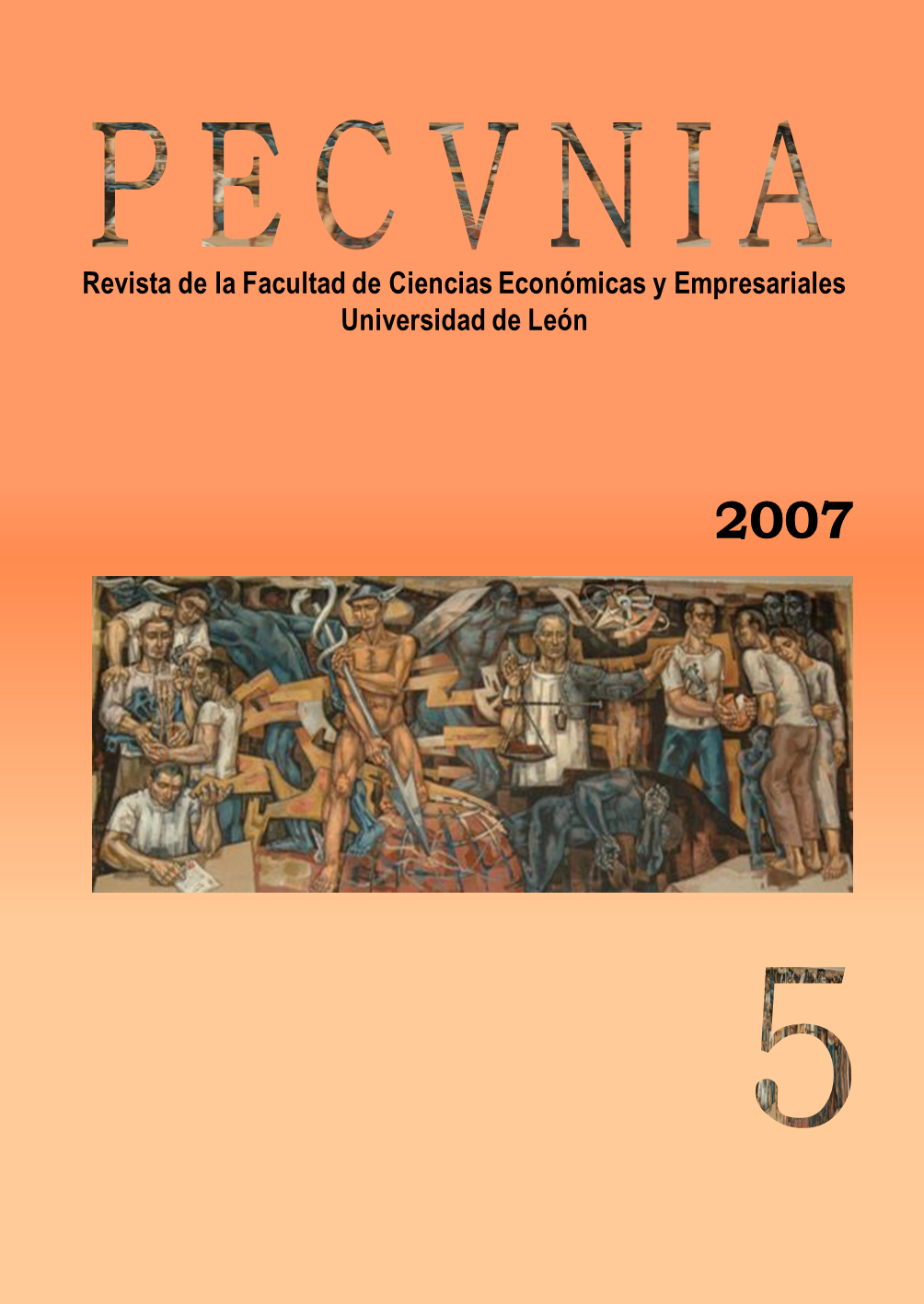Una radiografía del sector hotelero andaluz : análisis del compromiso y la satisfacción laboral de sus trabajadores
DOI:
https://doi.org/10.18002/pec.v0i5.712Palavras-chave:
Compromiso organizacional, Empresas hoteleras, Satisfacción laboral, Andalucía, Organizational commitment, Hotel companies, Job satisfaction, AndalusiaResumo
En el presente estudio se realiza, en primer lugar, un análisis descriptivo del sector hotelero andaluz -sector de creciente importancia en la economía española-, considerando su composición en función de diversas variables sociodemográficas. Para, posteriormente, y dada la importancia que actualmente tienen las actitudes de los trabajadores en las organizaciones de servicios, analizar el grado de compromiso de los trabajadores así como su relación con el grado de satisfacción respecto a diversas facetas del trabajo. Los resultados muestran que, a pesar de que la plantilla de estas empresas es mayoritariamente joven, con un porcentaje elevado de contratos eventuales y de salarios bajos, el nivel de compromiso con la organización es singularmente alto.A descriptive analysis of the Andalusian hotel trade is carried out in this paper, on the basis of its different socio-demographical variables. Subsequently, and because of the increasing importance of employees' attitudes in the service sector organizations, the employees' degree of commitment and its correlation with their degree of satisfaction with some job facets have been analysed.The results have shown that, even though these organizations are characterized by young personnel, with a high percentage of temporary contracts and low wages, there is an outstanding high degree of organizational commitment within their staff.
Downloads
Referências
AJZEN, I. (2001) "Nature and Operation of Attitudes", Annual Review of Psychology, Vol. 52, pp. 27-58.
ALLEN, N.J. y J.P. MEYER (1990) "The measurement and antecedents of affective, continuance and normative commitment to the organization", Journal of Occupational Psychology, Vol. 63, No. 1, pp. 1-18.
BABAKUS, E., S.W. CRAVENS, M. JOHNSTON y W.C. MONCRIEF (1996) "Examining the role of organizational variables in the salesperson job satisfaction model", Journal of Personal Selling & Sales Management, Vol. XVI, No. 3, pp. 33-46.
BECKER, T.E. y M. KERNAN (2003) "Matching commitment to supervisors and organizations to in-role and extra-role performance", Human Performance, Vol. 16, pp. 327-348.
BRIEF, A.P. y H.M. WEISS (2002) "Organizational behaviour: affect in the workplace", Review of Psychology, Vol. 53, pp. 279-307.
CROPANZANO, R., J.C. HOWES, A.A. GRANDEY y P. TOTH (1997) "The relationship of organizational politics and support to work behaviours, attitudes, and stress", Journal of Organizational Behaviour, Vol. 18, pp. 159-180.
CURRIVAN (1999) "The causal order of job satisfaction and organizational commitment in models of employee turnover", Human Resource Management Review, Vol. 9, n. 4, pp. 495-524.
FIRTH, L., D.J. MELLOR, K.A. MOORE y C. LOQUET (2004) "How can managers reduce employee intention to quit?", Journal of Managerial Psychology, Vol. 19, No. 2, pp. 170-187.
GRIFFETH, R.W., P.W. HOM y S. GAERTNER (2000) "A Meta-Analysis of Antecedents and Correlates of Employee Turnover: update, moderator tests and research implications for the next millennium", Journal of Management, Vol. 26, No. 3, pp. 463-488.
HARRISON, D.A., D.A. NEWMAN y P.L. ROTH (2006) "How important are job attitudes? Meta-analytic comparisons of integrative behavioural outcomes and time sequences", Academy of Management Journal, Vol. 49, No. 2, pp. 305-325.
HELLRIEGEL, D. y J.W.Jr. SLOCUM (2004) Comportamiento organizacional, 10ª ed. México: Thomson.
HERRBACH, O. (2006) "A matter of feeling? The affective tone of organizational commitment and identification", Journal of Organizational Behaviour, Vol. 27, No. 5, pp. 629-643.
HERSCOVITCH, L. y J.P. MEYER (2002) "Commitment to organizational change: extension of a three-component model", Journal of Applied Psychology, Vol. 87, pp. 474-487.
HOM, P.W. y A.J. KINICKI (2001) "Toward a greater understanding of how dissatisfaction drives employee turnover", Academy of Management Journal, Vol. 44, No. 5, pp. 975-987.
JAROS, S.J., J.M. JERMIER, J.W. KOEHLER y T. SINCICH (1993) "Effects of continuance, affective, and moral commitment on the withdrawal process", Academy of Management Journal, Vol. 36, No. 5, pp. 951-995.
JOHNSTON, M.W., A. PARASUNAMAN, C.M. FUTRELL y W.C. BLACK (1990) "A longitudinal assessment of the impact of selected organizational influences on salespeople's organizational commitment during early employment", Journal of Marketing Research, Vol. 27, August, pp. 333- 344.
LANCE, C.E. (1991) "Evaluation of a structural model relating job satisfaction, organizational commitment and precursors to voluntary turnover", Multivariate Behavioural Research, Vol. 26, pp. 137-162.
LEE, K.S. y T. GAO (2005) "Studying organizational commitment with the OCQ in the Korean retail context: Its dimensionality and relationships with satisfaction and work outcomes", International Review of Retail, Distribution and Consumer Research, Vol. 15, No. 4, pp. 375-399.
LIN, C.P. y H.C. MA (2004) "Career commitment as a moderator of the relationship among procedural justice, perceived organizational support, organizational commitment, and turnover intentions", Asia Pacific Management Review, Vol. 9, No. 3, pp. 519-538.
LINZ (2003) "Job satisfaction among Russian workers", Journal of Manpower, Vol. 24, n. 6, pp. 626-645.
LOCKE, E.A. (1976) "The nature and causes of job satisfaction". DUNNETTE, M.D. (Ed.) Handbook of Industrial and Organizational Psychology. Chicago (IL): Rand McNally, pp. 1279-1349.
LUND, D.B. (2003) "Organizational culture and job satisfaction", Journal of Business and Industrial Marketing, Vol. 18, No. 3, pp. 219-236.
MATHIEU, J.E. (1991) "A cross-level nonrecursive model of the antecedents of organizational commitment and satisfaction", Journal of Applied Psychology, Vol. 76, pp. 607-618.
MATHIEU, J.E. y D.M. ZAJAC (1990) "A review and meta-analysis of the antecedents, correlates and consequences of organizational commitment", Psychological Bulletin, Vol. 108, No. 2, pp. 171-194.
MEYER, J.P., T.E. BECKER y C. VANDENBERGUE (2004) "Employee commitment and motivation: a conceptual analysis and integrative model", Journal of Applied Psychology, Vol. 89, No. 6, pp. 991-1007.
MEYER, J.P. y L. HERSCOVITCH (2001) "Commitment in the workplace: Toward a general model", Human Resource Management Review, Vol. 11, pp. 299-326.
MORROW, P.C. y J.C. McELROY (1993) "Introduction: understanding and managing loyalty in a multi-commitment world", Journal of Business Research, Vol. 26, pp. 1-2.
MOWDAY, R.T., L. PORTER y R.M. STEERS (1982) Employee-Organization linkages: The psychology of commitment, absenteeism, and turnover. Nueva York: Academic Press.
NÚÑEZ, S. y M. PÉREZ (2000) "La rama de servicios en España: un análisis comparado", Banco de España, Boletín Económico, Diciembre.
PETTY, R.E., D.T. WEGENER y L.R. FABRIGAR (1997) "Attitudes and attitude change", Annual Review of Psychology, Vol. 48, pp. 609-647.
PORTER, L.W. y SMITH (1990) "The etiology of organizational commitment", Unpublished paper, University of California.
PORTER, L.W., R.M. STEERS, R.T. MOWDAY y P.V. BOULIAN (1974) "Organizational commitment, job satisfaction, and turnover among psychiatric technicians", Journal of Applied Psychology, Vol. 59, No. 5, pp. 603-609.
ROBBINS, S.P. (2004) Comportamiento Organizacional, 10ª ed. México: Prentice-Hall.
SCHOLARIOS, D. y A. MARKS (2004) "Work-life balance and the software worker", Human Resource Management Journal, Vol. 14, No. 2, pp. 54-74.
SIDERS, M.A., G. GEORGE y R. DHARWADKAR (2001) "The relationship of internal and external commitment foci to objective job performance measures", Academy of Management Journal, Vol. 44, pp. 580-590.
SILVA, P. (2006) "Effects of disposition on hospitality employee job satisfaction and commitment", International Journal of Contemporary Hospitality Management, Vol. 18, No. 4, pp. 317-328.
TESTA, M.R. (2001) "Organizational commitment, job satisfaction, and effort in the service environment", The Journal of Psychology, Vol. 135, No. 2, pp. 226-236.
VAN BREUKELEN, W., R. VAN DER VLIST y H. STEENSMA (2004) "Voluntary employee turnover combining variables from the traditional turnover literature with the theory of planned behaviour", Journal of Organizational Behaviour, Vol. 25, No. 7, pp. 893-914.
VANDENBERG, R.J. y C.E. LANCE (1992) "Examining the causal order of job satisfaction and organizational commitment", Journal of Management, Vol. 18, pp. 153-167.
WEISS, D.J., R.V. DAWIS, G.W. ENGLAND y L.H. LOFQUIST (1967) Manual for the Minessota Satisfaction Questionnaire. Minessota: Industrial Relations Center, University of Minessota.
Downloads
Publicado
Como Citar
Edição
Seção
Licença
Copyright (c) 2007 Eva Gallardo, Sandra María Sánchez, Tomás López Guzmán

Este trabalho está licenciado sob uma licença Creative Commons Attribution-NonCommercial-ShareAlike 4.0 International License.
Los autores que publican en esta revista están de acuerdo con los siguientes términos:- Los autores ceden de forma no exclusiva los derechos de explotación (reproducción, distribución, comunicación pública, transformación) a la Universidad de León, por lo que pueden establecer, por separado, acuerdos adicionales para la distribución no exclusiva de la versión de la obra publicada en la revista (por ejemplo, alojarlo en un repositorio institucional o publicarlo en un libro), con un reconocimiento de su publicación inicial en esta revista.
- Este trabajo se encuentra bajo la Creative Commons Attribution-NonCommercial-ShareAlike 4.0 International License. Puede consultarse desde aquí la versión informativa y el texto legal de la licencia.
- Se permite y se anima a los autores a difundir electrónicamente las versiones pre-print (versión antes de ser evaluada) y/o post-print (versión evaluada y aceptada para su publicación) de sus obras antes de su publicación, ya que favorece su circulación y difusión más temprana y con ello un posible aumento en su citación y alcance entre la comunidad académica.












